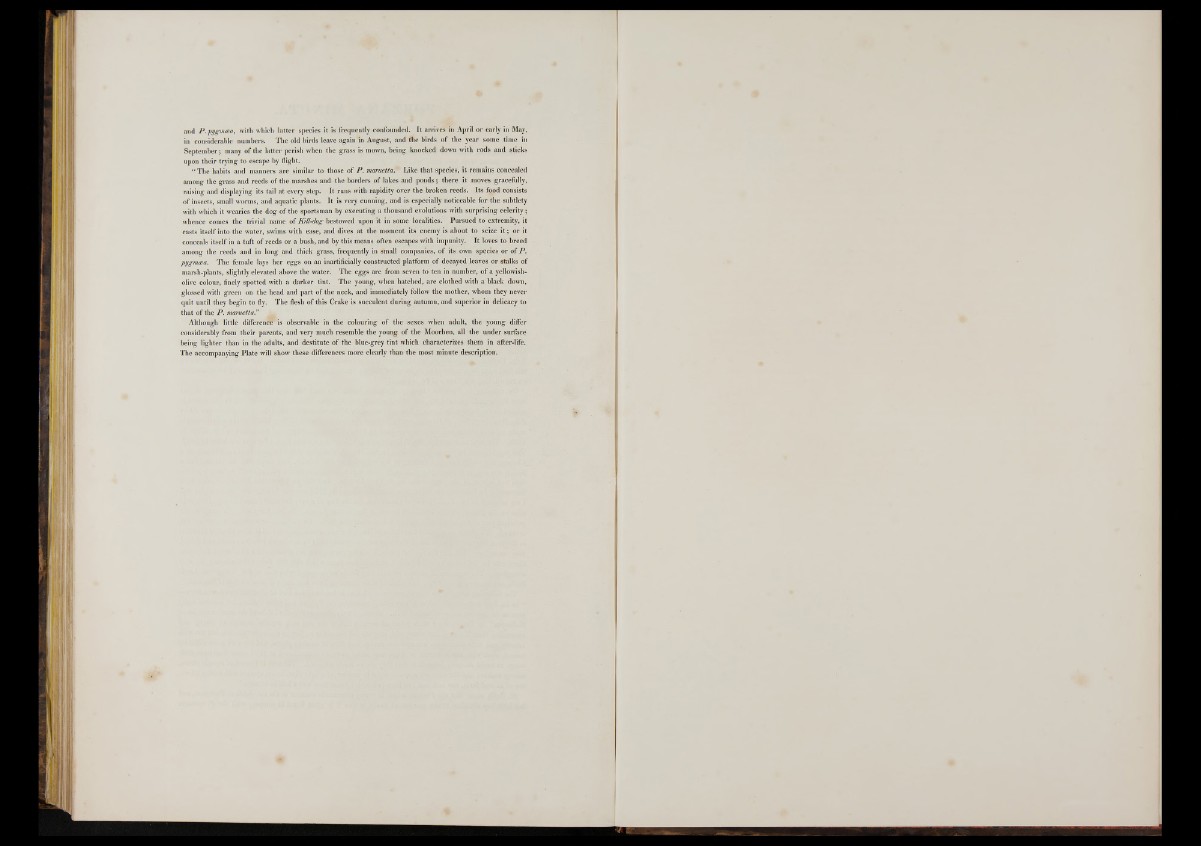
and P. pygmeea, with which latter species it is frequently confounded. It arrives in April or early in May,
in considerable numbers. The old birds leave again in August, and the birds of the year some time in
September; many of the latter perish when the grass is mown, being knocked down with rods and sticks
upon their trying to escape by flight.
“ The habits and manners are similar to those of P . m a r u e t t a Like that species, it remains concealed
among the grass and reeds of the marshes and the borders o f lakes and ponds; there it moves gracefully,
raising and displaying its tail at every step. It runs with rapidity over the broken reeds. Its food consists
of insects, small worms, and aquatic plants. I t is very cunning, and is especially noticeable for the subtlety
with which it wearies the dog of the sportsman by executing a thousand evolutions with surprising celerity;
whence comes the trivial name of Kill-dog bestowed upon it in some localities. Pursued to extremity, it
casts itself into the water, swims with ease, and dives at the moment its enemy is about to seize i t ; o r it
conceals itself in a tuft of reeds or a bush, and by this means often escapes with impunity. It loves to breed
among the reeds and in long and thick grass, frequently in small companies, of its own species or of P .
pygmeea. The female lays her eggs on an inartificially constructed platform o f decayed leaves or stalks of
marsh-plants, slightly elevated above the water. The eggs are from seven to ten in number, o f a yellowish-
olive colour, finely spotted with a darker tint. The young, when hatched, are clothed with a black down,
glossed with green on the head and part of the neck, and immediately follow the mother, whom they never
quit until they begin to fly. The flesh o f this Crake is succulent during autumn, and superior in delicacy to
that o f the P . maruetta.” 4
Although little difference is observable in the colouring of the sexes when adult, the young differ
considerably from their parents, and very much resemble the young o f the Moorhen, all the under surface
being lighter than in the adults, and destitute of the blue-grey tint which characterizes them in after-life.
The accompanying Plate will show these differences more clearly than the most minute description.